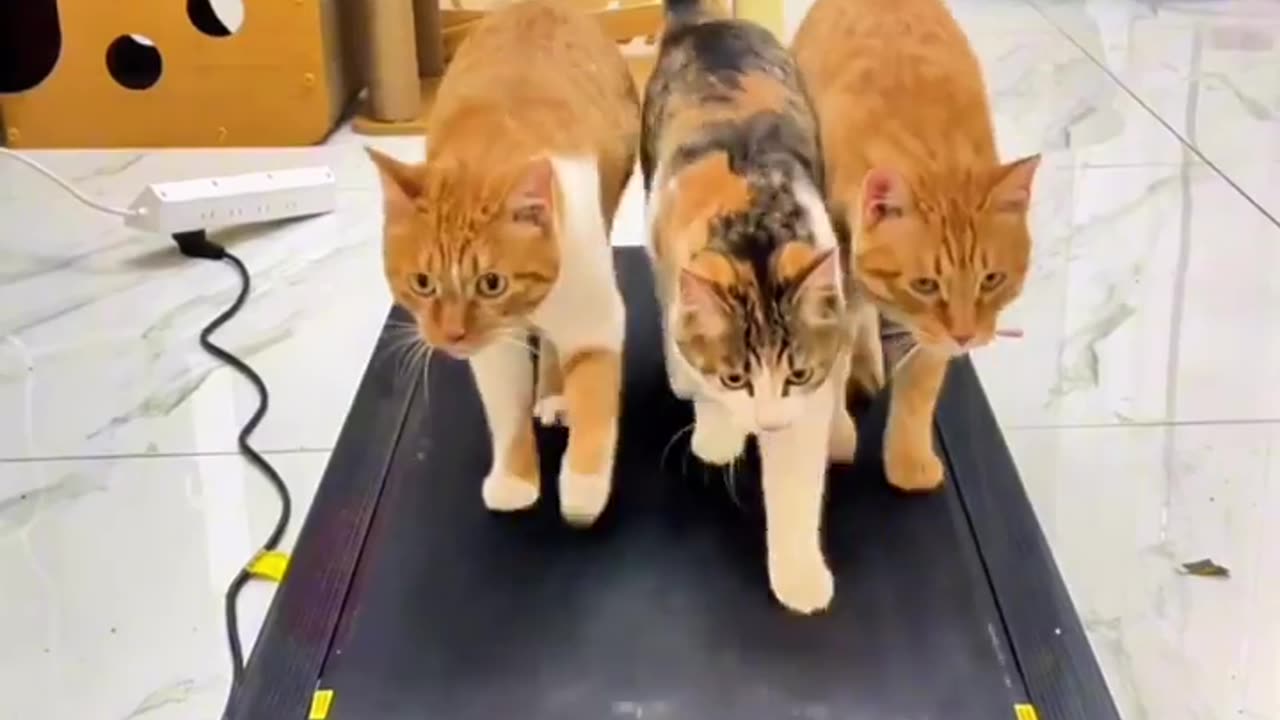Premium Only Content

Cat exercise
Cats are known for their independent nature, but regular exercise is important to keep them healthy, mentally stimulated, and prevent obesity. Here are some tips for exercising your cat:
Play with interactive toys: Cats love toys that mimic prey, such as wand toys with feathers or strings. Engage your cat in interactive play sessions by moving the toy around and encouraging them to chase and pounce on it. This type of play can help satisfy their hunting instincts.
Laser pointers: Using a laser pointer can be a great way to get your cat moving. Cats love to chase the elusive red dot, but make sure to never shine the laser directly in their eyes. Always end the play session with a physical toy or treat to allow your cat to "catch" something.
Cat trees and climbing posts: Providing vertical spaces like cat trees or climbing posts can encourage exercise and allow your cat to engage in natural behaviors like climbing, scratching, and jumping. These structures provide mental stimulation and exercise as cats explore different levels and surfaces.
Catnip or treat puzzles: Introducing puzzle toys that dispense treats or catnip can keep your cat mentally engaged and physically active. These toys require your cat to figure out how to access the reward, encouraging problem-solving skills and physical activity.
Set up an indoor obstacle course: Create an indoor obstacle course using boxes, tunnels, and different surfaces for your cat to explore and navigate. This can be a fun and stimulating way to encourage exercise while keeping them entertained.
Controlled outdoor access: If you have a secure outdoor space, you can consider allowing your cat supervised access. This could be through a cat enclosure or a securely fenced yard. Always prioritize your cat's safety by ensuring they cannot escape or come into contact with potential hazards or other animals.
Remember to start slowly and gradually increase the intensity and duration of the exercise sessions. Each cat has its own preferences and energy levels, so observe what activities your cat enjoys the most and tailor the exercise routine accordingly. Additionally, it's important to consult with your veterinarian about your cat's exercise needs and any specific considerations based on their age, breed, and health condition
-
 2:14:01
2:14:01
Fresh and Fit
4 hours agoDr. Disrespect Moves To Rumble!
35.5K20 -
 6:14:53
6:14:53
Akademiks
6 hours agoDrake Sued his Label for Botting Kendrick Lamar Streams to 'End Him'. Kendrick Drops new video!
36.2K10 -
 0:46
0:46
Dr Disrespect
12 hours agoIt's not just a stream... it's an experience
306K1.65K -
 5:45:38
5:45:38
80sKiid
7 hours ago $22.43 earnedFirst stream on RUMBLE!!!!!
84K5 -
 3:56:31
3:56:31
JakeParker
7 hours ago $13.61 earnedJakeParker is LIVE on Rumble
47.3K -
 LIVE
LIVE
SpartakusLIVE
8 hours ago $23.77 earnedThe Duke rallies squad for LAUGHS into the night with a SMATTERING of TOXIC banter
1,666 watching -
 1:03:51
1:03:51
Flyover Conservatives
1 day agoGeneration Z’s Revolution: 17 Year Old Author on the Return of Faith, Family, and the End of Feminism - Hannah Faulkner; Economic Update - Dr. Kirk Elliott | FOC Show
40.1K2 -
 1:12:43
1:12:43
Adam Does Movies
11 hours ago $20.01 earnedMoviegoers Are Singing Now! + Lilo & Stitch + Sonic 3 - LIVE!
76.7K7 -
 1:26:05
1:26:05
Donald Trump Jr.
13 hours agoRegime Media Imploding: What’s Next for MSNBC? Plus Michael Knowles & Alex Marlow | TRIGGERED Ep.194
227K212 -
 37:26
37:26
Glenn Greenwald
11 hours agoGlenn Takes Your Questions: On Trump's Cabinet, The G20 Summit, and More | SYSTEM UPDATE LOCALS SPECIAL
90.5K55